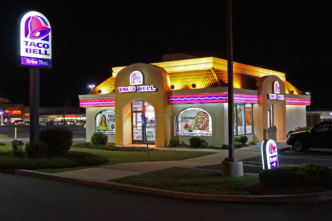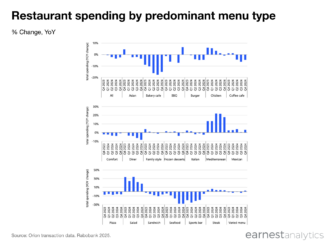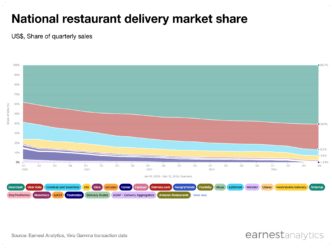Where Did All the Toys R Us Kids Go?
As shoppers prepare for the holiday season, the big question on retailers’ minds is: Who will succeed in attracting former Toys R Us customers?
Big-box stores like Target and Walmart have announced plans to expand inventory and devote more floor space to toys and games in hopes of winning over former Toys R Us kids and their families. And of course, all eyes will be on Amazon, who has disrupted its fair share of industries, from books to beauty and retail, in its quest to dominate consumers’ wallets.
At Earnest Analytics (FKA Earnest Research), we analyze the purchase data of millions of anonymous U.S. consumers to better understand consumer shopping behavior and company performance.
For this analysis, we looked at the shopping behaviors of over 500,000 Toys R Us customers in our panel between 2014 and 2018, to answer questions like:
- How quickly did Toys R Us lose customers?
- Which companies won market share from Toys R Us over time?
- Who are Toys R Us customers, and what do their brand affinities suggest about their future purchasing habits?
Read on for answers to these questions and more.
Leaving the Nest
Back in 2014, more than one-third of all consumers in our panel shopped at Toys R Us, with 36% making a purchase in store or online at the toys retailer. Over the next few years, the Toys R Us customer base gradually diminished, down to 30% in 2017.
While Toys R Us was losing customers, Amazon was gaining new ones. Our data showed that in 2014, 77% of people in our panel were shopping with the e-commerce giant, and by 2017 that number grew to 85%.

Amazon: The (Not-So) New Kid on the Block
While many factors contributed to Toys R Us eventually shutting its doors, including its $5.2 billion in debt and a decline in overall birth rates among millennials, competition from Amazon and other large retailers may have put the final nail in Geoffrey the Giraffe’s coffin.
Our data shows a significant shift in spend among customers who shopped at Toys R Us in 2014 to three main retailers: Amazon, Walmart and Target. Between 2014 and 2017, Toys R Us customers more than doubled their spend at Amazon. In this same time period, their spend at Toys R Us decreased by 41%, from $255 on average in 2014 to $132 in 2017.

With Americans spending less at Toys R Us, it’s no surprise that the retailer was also losing market share. In 2014, Toys R Us held 5% of the market against Amazon, Walmart and Target, dropping to just 1% by the fall of 2018. During this same time period, Amazon’s share grew from 18% to 32% among this competitor set.

Where Are They Now?
Where will former Toys R Us customers be spending money this holiday season aside from big-box retailers and Amazon?
We created a brand affinity profile for Toys R Us customers, demonstrating where they spent more or less per year than the average U.S. consumer in 2018. Not surprisingly, kids’ brands like Carter’s, BuyBuyBaby and The Children’s place made the top of the list. The average Toys R Us customer spent 155% more at Carter’s than the average consumer in our panel, and 143% more at BuyBuyBaby in 2018.

Just as interesting to note was where Toys R Us customers were less likely to shop compared to the average consumer. People who shopped at Toys R Us spent less on on-demand services like Lyft, Uber and Grubhub. They also spent less at luxury lifestyle brands like Equinox and Lululemon.

Earnest data is derived from the credit, debit and bill pay activity of millions of anonymous U.S. consumers. Data included in this analysis is from January 1, 2014 — September 30, 2018.











